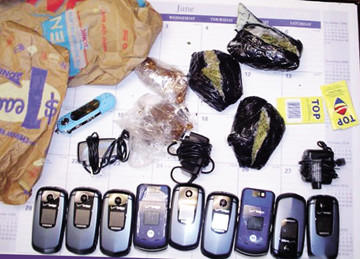After last year’s announcement by the CDCR that they would halt the deployment of the managed access systems touted to stop the supply of contraband cell phones into California’s state prisons, the Department of Corrections and Rehabilitation has now announced it is installing 272 more metal detectors, 68 X-ray machines to scan packages, 103 low-dose X-ray scanners, 170 hidden surveillance cameras, 34 devices to decrypt and analyze cellphones, and 272 scanners that detect magnetic signals […]
supply and demand
Today I participated in the FCC’s Workshop on Inmate Calling Services Reform on the New Technologies panel to consider new and emerging forms of communications in correctional settings beyond the traditional wireline telephone call. Below is the text of my opening statement: As this workshop is focused on inmate calling services and this panel is specifically targeted to new technologies, I would like to focus my opening comments on a new solution to the problem […]
The American Correction Association has an article on its website summarizing the recent meeting of the newly-formed No Cells in Cells Coalition on Oct. 23, 2012, at the ACA headquarters to discuss the problem of contraband cell phones smuggled into prisons. Attendees included representatives from the Delaware Department of Corrections, the Maryland Department of Public Safety and Correctional Services, the Virginia Department of Corrections, the American Jail Association, the National Organization for Victim Assistance, the […]
An article on the corrupting influence of prisoner demand for contraband items, and the willingness to pay for those items, has on correctional officers. Contraband smuggling in prisons is a problem of supply and demand. Prison initiatives to reduce contraband, such as smuggled cellphones, should include strategies to reduce demand as well as prevent supply. The meshDETECT secure prison cell phone solution co-opts the demand for smuggled cell phones, and therefore the contraband value of […]




